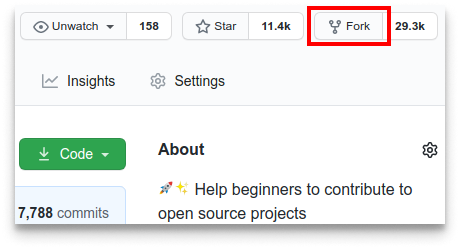Hacktober Fest 2021
This repository is made for beginners who are unfamiliar with open source and GitHub. So what is holding you back?! Make your first contribution to the open source and take home swags.
What is Hacktober Fest?
Hacktoberfest is a month-long open source contribution program hosted by DigitalOcean in the month of October for supporting open source development. Hacktoberfest encourages participation in the open source community, which grows bigger every year. Whether you are a pro in programming or a newbie, Hacktoberfest welcomes each one of the contributors for providing their valuable contribution to the open source community. Completing the challenge earns you a limited edition swags and other exiciting goodies.
How to receive swags?
- Register yourself at the Hacktober Fest Website
- Create 4 pull-requests from repositories participating in the challenge (repositories having
hacktoberfesttopic) - Successfully merged PRs will be validated further for 14 days.
- After that, the PR is accepted
- Remember! All PRs must be done between October 1 to October 31 to be eligible for swags.
- This year the first 55,000 participants will be eligible for the prize.
How to contribute?
Read RULES.md before creating a pull request
PRs violating the rules will be closed and reported Spam!
If you're not comfortable with command line, here are tutorials using GUI tools. If you don't have git on your machine, install it.
1. Fork the repository.
2. Clone your forked copy of the project.
git clone https://github.com/abhilashmnair/HacktoberFest2021.git
3. Navigate to the project directory
cd HacktoberFest2021
4. Add a reference(remote) to the original repository.
git remote add upstream https://github.com/abhilashmnair/HacktoberFest2021.git
5. Check the remotes for this repository.
git remote -v
6. Always take a pull from the upstream repository to your master branch to keep it at par with the main project(updated repository).
git pull upstream main
7. Create a new branch.
git checkout -b <your_branch_name>
8. Perform your desired changes to the code base.
9. Track your changes
git add *
10. Commit your changes .
git commit -m "Message"
11. Push the committed changes in your feature branch to your remote repo.
git push -u origin <your_branch_name>
12. To create a pull request, click on compare and pull requests. Please ensure you compare your feature branch to the desired branch of the repository you are supposed to make a PR to.
Not a developer or programmer? Don't worry! Add useful documentation and fix grammatical errors in the README file. Every single contribution of yours will benefit your open source venture.
License
This repository and the contained files are licensed under MIT License. See LICENSE for full text.

